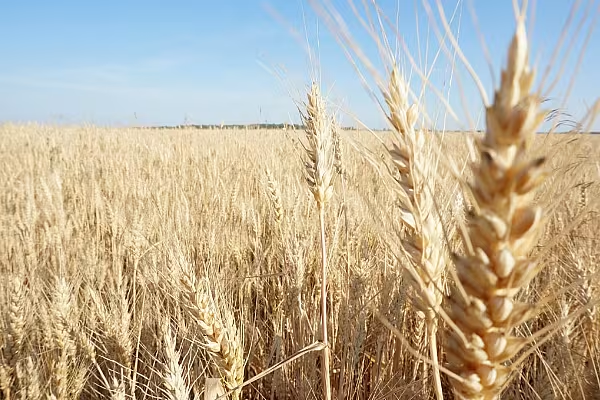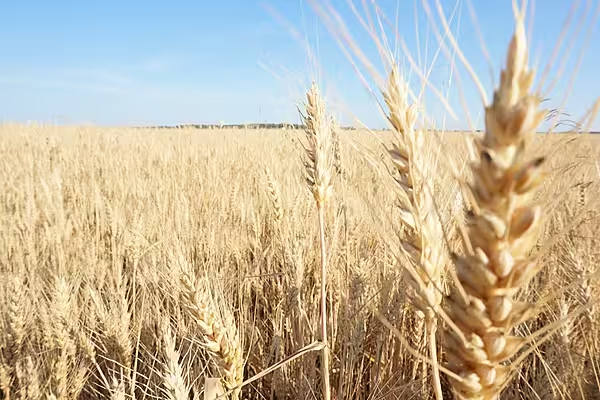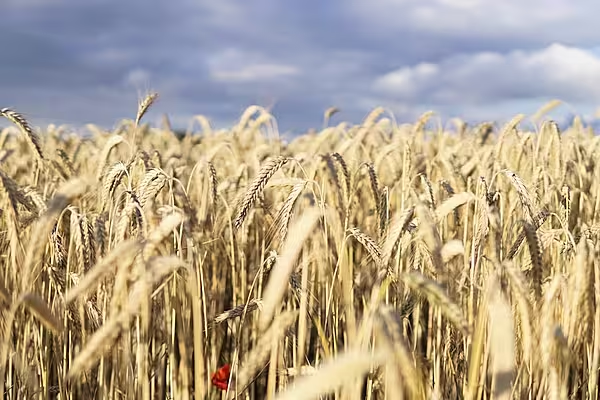U.S. farmers expanded plantings of winter wheat by 11% from a year ago to an eight-year peak, encouraged by high prices tied to concerns over food supplies following Russia's invasion of major wheat producer Ukraine, as well as relatively low input costs and expanded crop insurance programs.
But even with the added acres, a multi-year drought that has gripped the key Plains wheat belt puts harvest prospects in doubt, especially in states like top producer Kansas and Oklahoma, the No. 3 winter wheat producer last year.
An uptick in precipitation in recent days is helpful but won't be enough to revive the crop, experts say.
'Unlikely To Improve'
As a result, U.S. wheat exports, projected at a 51-year low in the marketing year begun June 1, 2022, are unlikely to improve significantly in the next season despite efforts from the Biden administration to increase U.S. food production after the Ukraine war.
Winter wheat typically represents about two-thirds of U.S. production, with the remainder planted in the spring, and the U.S. has lost market share to other wheat exporters, including Russia, in recent years.
"Because the crop was planted so late, and it's stressed due to lack of moisture, we probably are going to see a yield drag," said Mike Schulte, executive director of the Oklahoma Wheat Commission.
The crop was planted last fall and lies dormant over the winter, awaiting spring rains that will be crucial in determining whether farmers commit to harvest the crop or cut their losses and terminate the wheat to plant something else.
Condition Ratings
Monthly condition ratings for winter wheat declined sharply in Oklahoma during January, although ratings inched higher in top producer Kansas, the U.S. Department of Agriculture said on Monday.
Unusually high wheat prices this fall inspired farmers to expand acres, notably in the Midwest, a secondary wheat-producing region that grows soft red winter wheat variety used to make cookies and snack foods. U.S. soft red wheat acres rose by 20% year-on-year and planting jumped by 45% in Illinois, the No. 8 U.S. winter wheat state by acreage.
"We are up on acres because we sold (wheat) last year for $10 to $11 per bushel; we haven't done that in my lifetime," said Illinois farmer David Justison, who increased his wheat plantings by about 25% for 2023, to 1,530 acres.
As an added incentive, the Biden administration last July expanded the number of U.S. counties where farmers can obtain crop insurance on a second crop planted after wheat – typically soybeans in the Midwest, or sorghum in the western Plains.
With the expanded "double-crop" coverage options in 1,500 counties, "Guys might be encouraged to plant a little more wheat," said Eric Brammeier, an agent with Illinois-based SC Crop Insurance.
Drought And Snow
While soft wheat in the Midwest is off to a good start, crops are struggling with drought in the much larger wheat states of the Plains, where farmers grow hard red winter wheat, the largest U.S. wheat class, used to make bread.
Ongoing drought in the Plains actually contributed to the 10% jump in hard red winter wheat plantings for 2023 by freeing up acres where corn or sorghum crops failed last summer, said Lucas Haag, an extension agronomist at Kansas State University.
Similarly, Haag, said, if the current drought persists into springtime, Plains farmers might skip planting corn and sorghum altogether in 2023 and wait to plant winter wheat this coming fall, for harvest in 2024.
"If we don't get significant moisture ... I think farmers may elect to fallow some of that ground," Haag said. "We could see wheat acres tick up again for the 2024 crop," he said.
Several inches of snow fell recently in northwest Kansas, Nebraska and Colorado, providing an insulating blanket against frigid temperatures this week that could have otherwise damaged crops. The dormant wheat will benefit from the moisture in the snow, although the crop will require much more precipitation as it resumes growing in the spring.
Farmers will be watching to see if the expected departure of the current La Nina weather phenomenon, which tends to exacerbate drought in the Plains, will help.
Said Schulte, "We are certainly going to need moisture if we are going to have any crop at all."
News by Reuters, edited by ESM – your source for the latest supply chain news. Click subscribe to sign up to ESM: European Supermarket Magazine.














